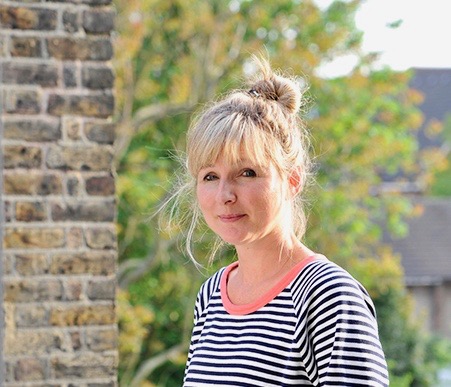9 of the best flowers to grow for drying – to extend the beauty of your backyard blooms
Many flowers are as beautiful dried as they are fresh

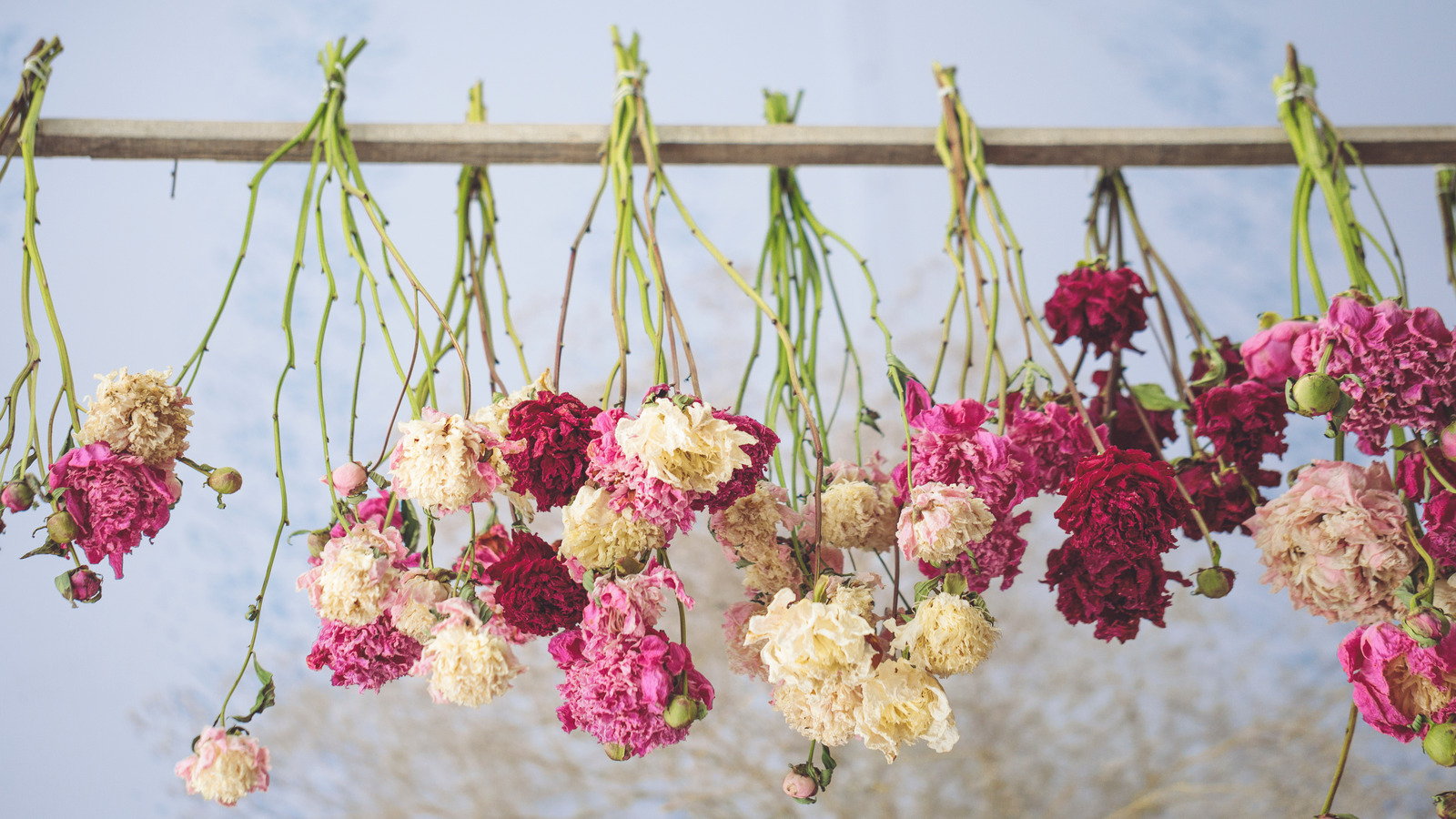
Many people grow flowers just for the sheer pleasure of enjoying them in the garden while they're in bloom. However, it's entirely possible to prolong the pleasure of your plants into the next season and beyond, if you choose the best flowers to grow for drying.
Some of these flowers are among the best annuals, while others are perennials, but what they have in common is that they look as beautiful dried as they do fresh. It's a different kind of beauty but one that can be enjoyed in your home for far longer than fresh flowers.
Whether you know how to dry flowers or not, these are the species most suited to this much-loved craft. So why not give growing them a go and enjoy the beauty of your blooms across the seasons.
1. Strawflowers (Helichrysum bracteatum)
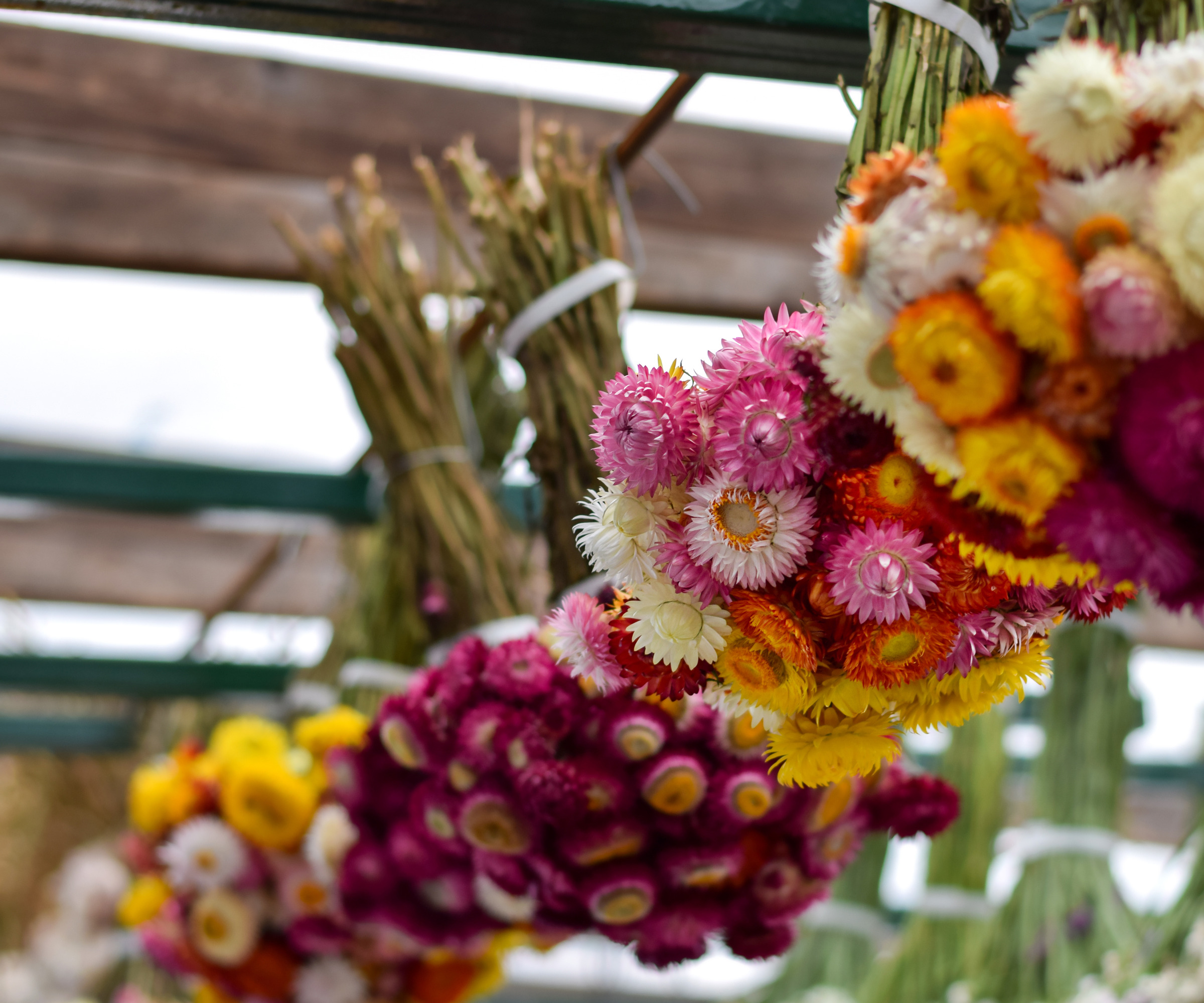
Native to Australia, these hardy annuals are known as everlasting flowers for their ability to look just as beautiful once they've been dried. To thrive, strawflowers need a sunny spot and well-drained soil.
They can be sown in mid to late spring, so are a wonderful flower to plant in May and will bloom from mid-summer. As well as being good for drying, these pretty plants are also a great choice for a cutting garden.
Start these strawflower seeds from True Leaf Market outside, one-two weeks before the final frost in your zone.
'Strawflowers are one of the most beloved “everlastings” thanks to their crisp, papery texture and vivid colors that remain vibrant long after drying,' says Tabar Gifford, master gardener and representative, American Meadows.
Design expertise in your inbox – from inspiring decorating ideas and beautiful celebrity homes to practical gardening advice and shopping round-ups.
'I love planting a dwarf mix as they are especially easy to grow, reaching just 18 inches tall, they are perfect for small gardens, borders, or containers. The multi-petaled flowers are striking in all stages, from bud to fully opened, and have a subtle silky sheen that seems to magnify the rich colors.
'These blooms thrive in full sun and are drought-tolerant, deer-resistant, and incredibly prolific. Whether fresh in the garden or preserved in crafts, strawflowers add color and charm with minimal effort. If you're going to dry them, harvest blooms when they’re about half open for the best shape. Remove foliage, bundle stems with a rubber band, and hang upside down in a well-ventilated, dry space.'

Tabar Gifford is a Master Gardener, and dedicated “plant geek”. With a lifelong love for gardening and nature, and a background in environmental studies and sustainable community development, she combines horticultural expertise with a commitment to education. Striving to empower individuals in achieving their gardening aspirations, Tabar embodies a genuine passion for sharing her knowledge. She gardens in zone 4 in Vermont.
2. Amaranthus caudatus
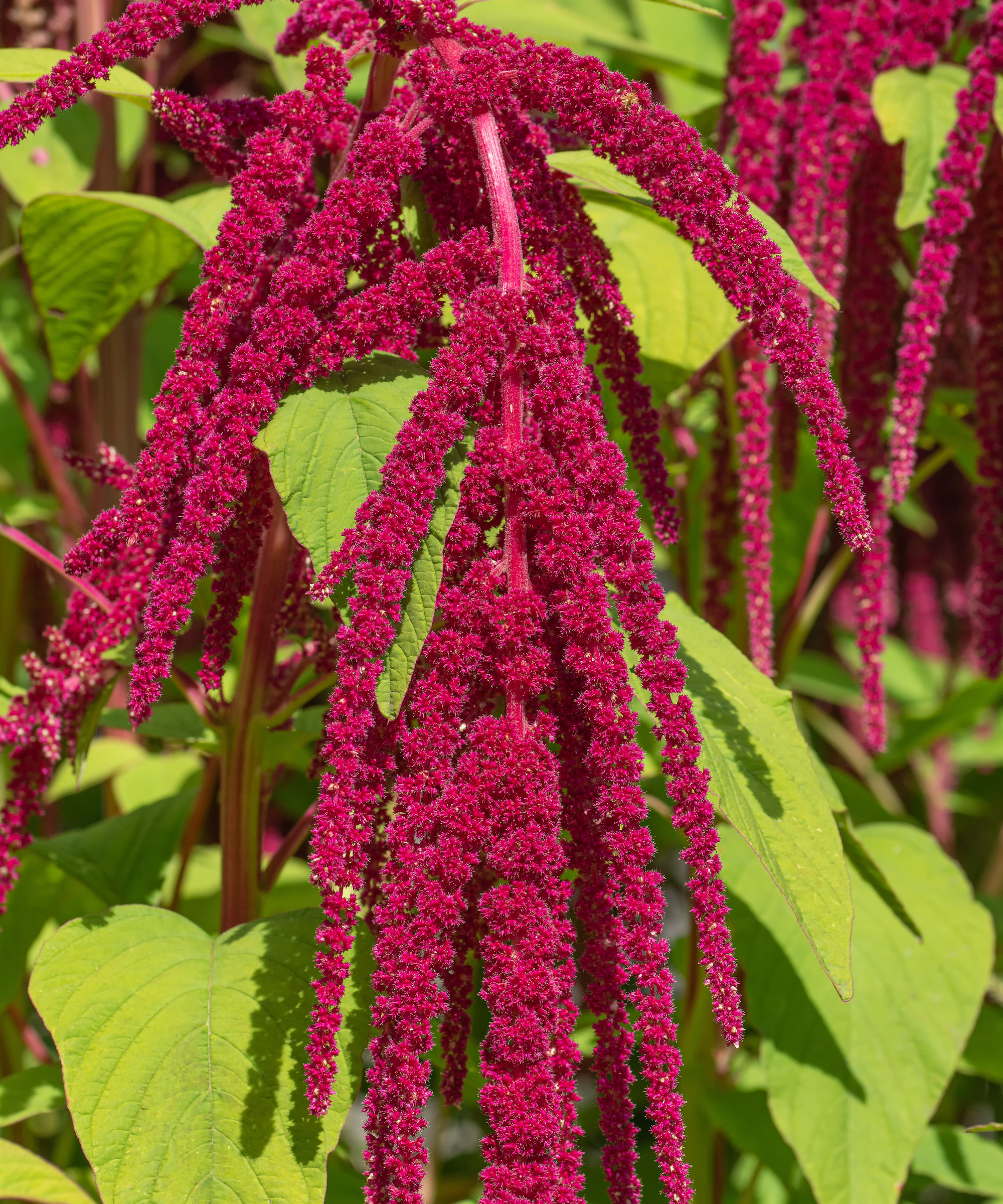
Although a short-lived annual, amaranthus can be enjoyed for far longer if dried. There are many varieties, but 'love lies bleeding' is popular, due to its striking red tendrils. If you don't know how to grow amaranthus, be assured it's an easy plant to grow in moist, well-drained soil and full sun. It's spectacular in a display of fresh or dried flowers and its leaves and seeds are edible too.
'I love growing Amaranthus caudatus, because it is a true showstopper in the garden and in dried arrangements,' says Tabar. 'Its long, rope-like tassels in deep maroon or rose shades give a romantic, vintage look that evokes passion and nostalgia.
'These bold blooms dangle elegantly above bright green foliage and are incredibly easy to grow — heat-tolerant, drought-tolerant, and prolific. Harvest the tassels when they’re fully colored but before seeds begin to drop.
'Strip the leaves and hang the stems upside down in a dry, well-ventilated, dark area to preserve color and prevent mold. They retain a rich color and soft texture, adding drama and movement to dried bouquets, wreaths, or even seasonal garlands.'
These amaranthus seeds from Burpee can be started outdoors until the middle of May.
3. Statice Limonium sinuatum
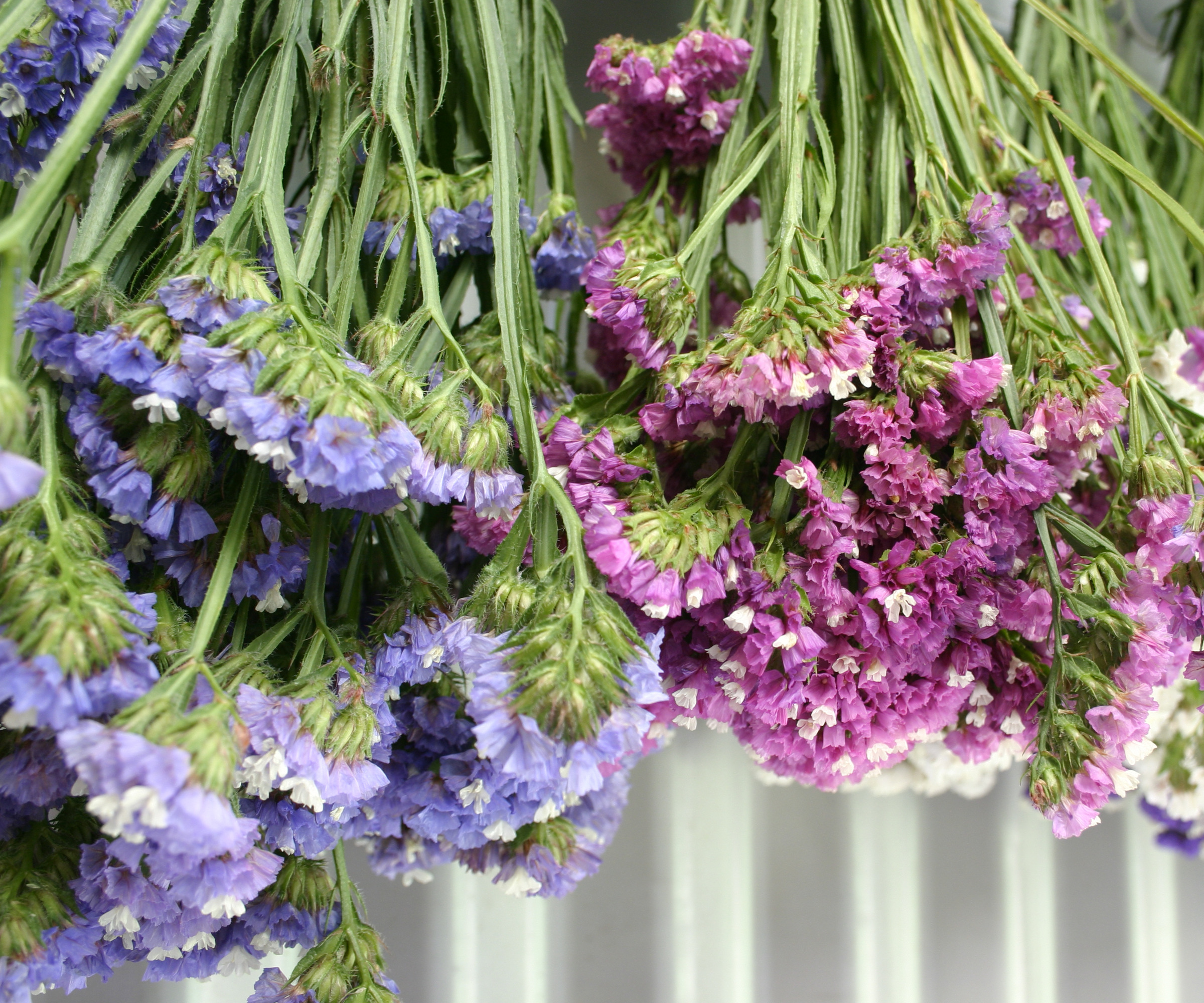
With its small pretty purple, pink or lilac petals, statice is a lovely colorful alternative to gypsophila in flower bouquets – although it is sometimes also available in other colors or with white flowers too. This makes it another wonderful addition to a cut flower garden, for blooms fresh and dried. Although there are perennial types of statice, it's the annuals that are best suited for drying.
'Statice is a classic in dried flower arrangements, prized for its papery bracts in purple, white, yellow, and pink,' says Tabar. 'It provides both structure and vibrant color in dried bouquets and is a great "filler" flower to balance bold blooms like amaranth or strawflower.
'It's great to grow as it's deer-resistant and drought-tolerant. Harvest statice when its flowers are fully open. Group them into small bundles and hang upside down in a dark, dry place. Statice retains its color and texture extremely well, making it one of my drying favorites.'
For a warmer tone in your flower arrangements, plant these apricot-hued statice seeds from True Leaf Market after the final frost in your region.
4. Larkspur
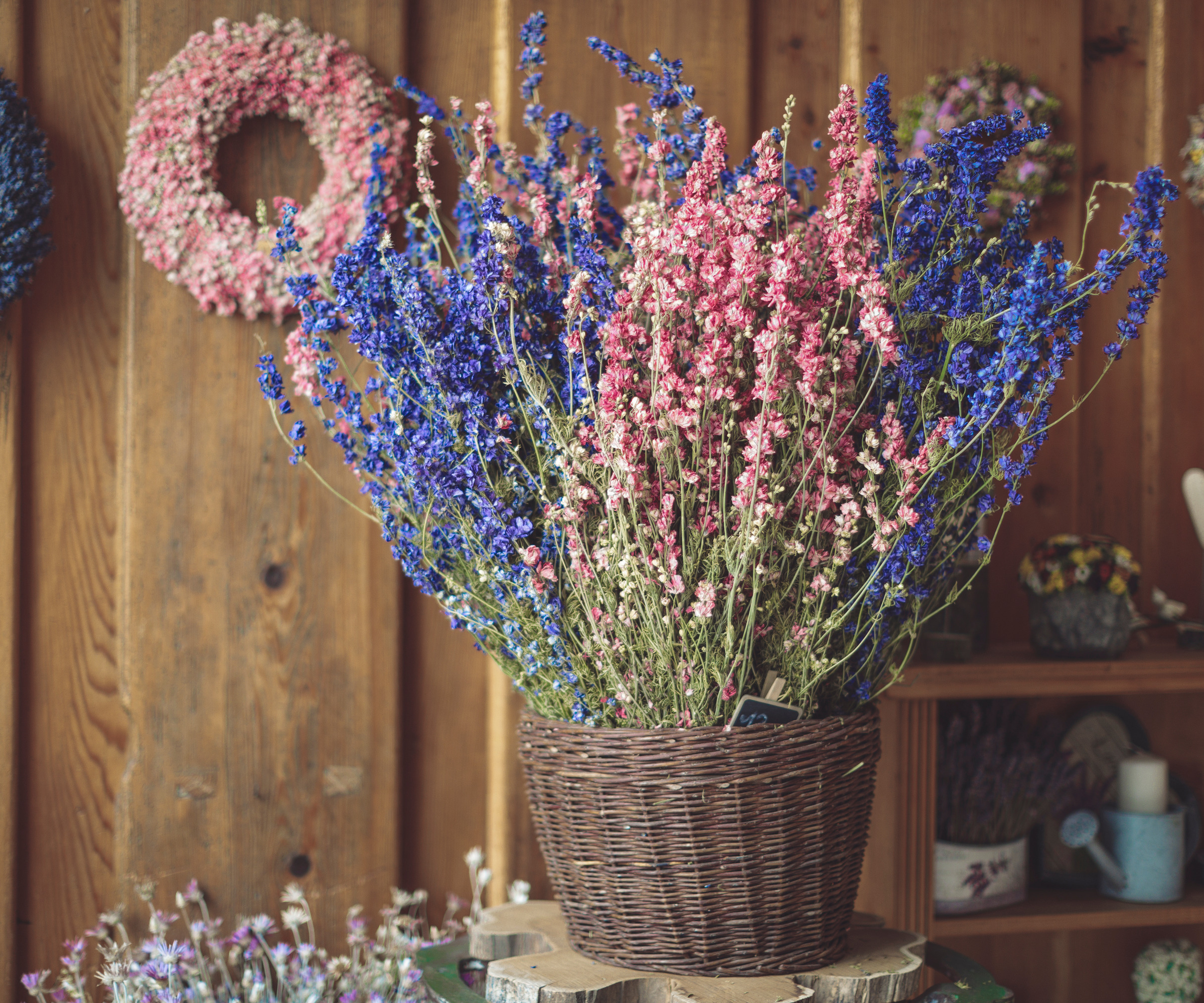
Popular in cottage gardens, larkspur brings vibrant color and height to beds and borders with their tall, bright blue, pink, purple or red flower stalks. Although white larkspur are eye-catching too.
Part of the delphinium genus, this plant likes moist, well-drained soil and full sun. Once they have bloomed, cut the flower spikes to encourage more, and hang the cut stems upside down to dry for a couple of weeks.
'Larkspur are among the best flowers to grow for drying for their color,' says Mackenzie Joyce, floral designer, Harmony Harvest Farm. 'They’re dreamy, beautiful, and colorful. They hold their shape beautifully when dried, and the colors stay surprisingly vibrant. We love tucking them into wreaths and arrangements for that perfect pop.'
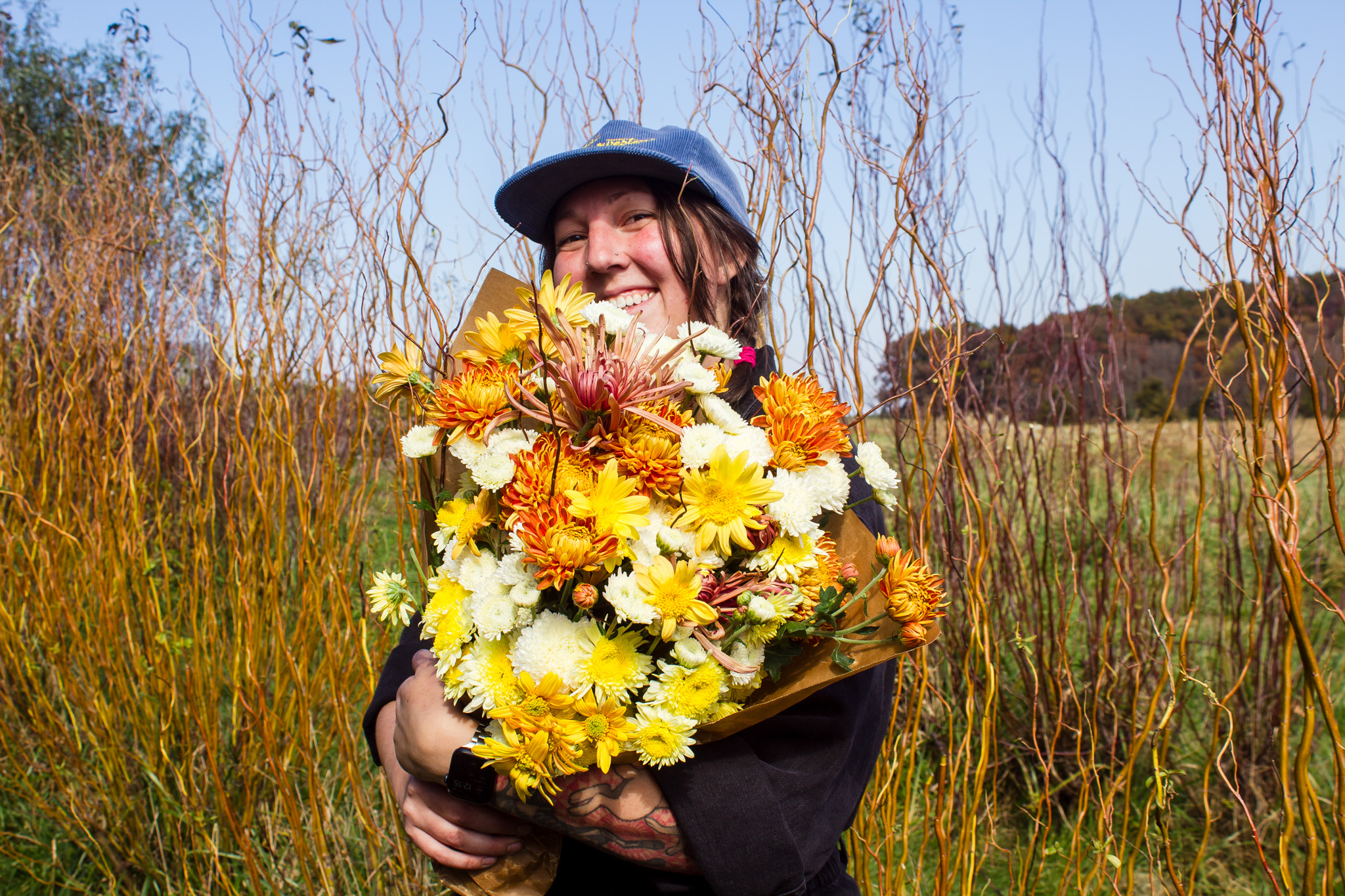
Mackenzie Joyce is the floral designer at Harmony Harvest Farm, a family-run company based in Virginia, which grows and ships over 200 varieties of flower including anemone, ranunculus, peonies, hydrangea, dahlias, and heirloom mums.
5. Poppies
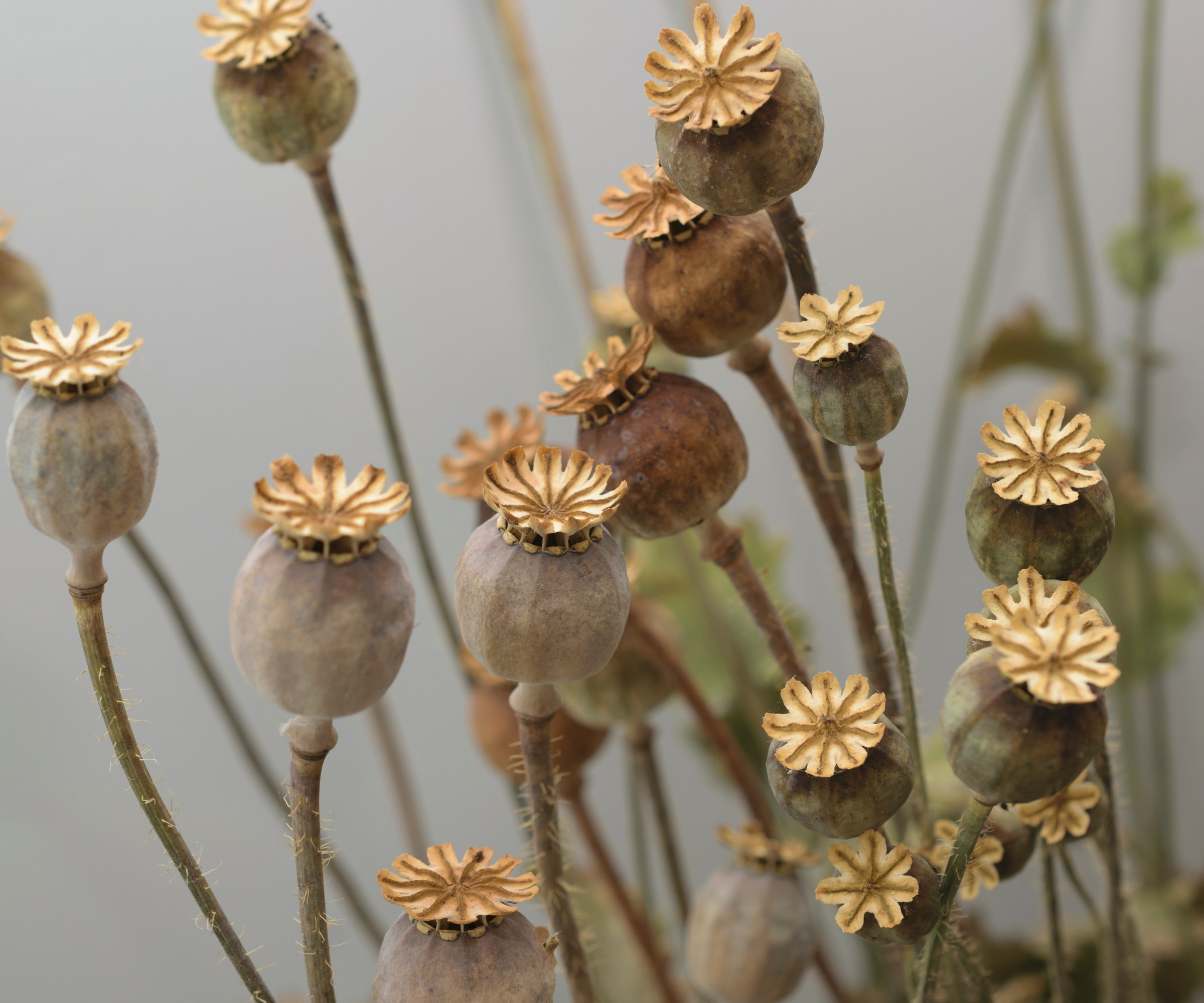
As well as being one of the fastest growing flowers to plant in spring, poppies can be used to make a pretty fall display once they have faded. This time it's not the pretty flowers that can be preserved but the unusual seed pods, which look beautiful once dried.
'Dried poppy pods are great in arrangements for texture,' says Mackenzie. 'Once the petals drop, the seed heads become these really cool pods. They add a natural, earthy vibe to anything we design and dry super easily.'
6. Sweet Annie (Artemesia annua)
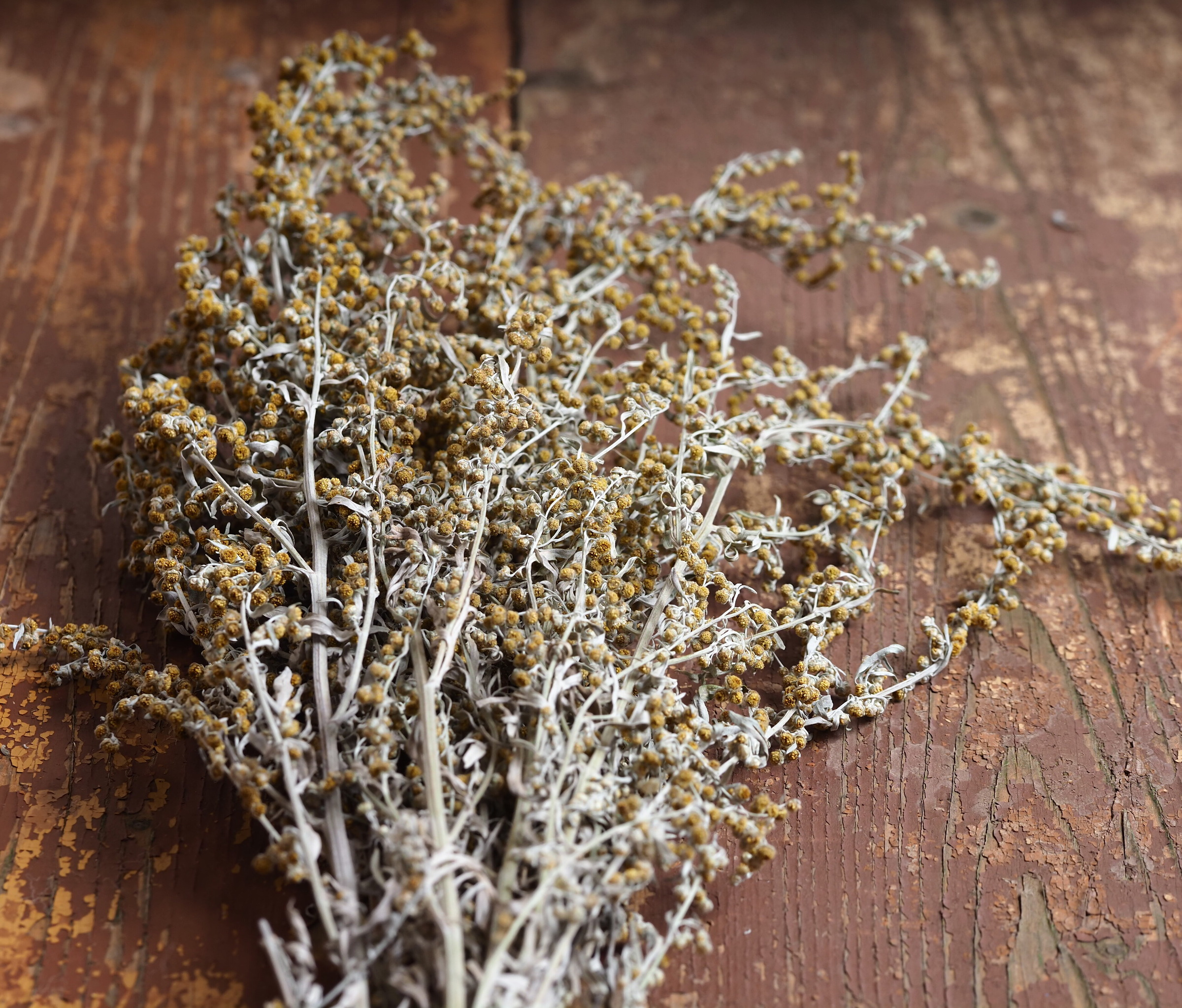
Originating in Asia, this medicinal plant is sometimes referred to as sweet Annie, annual mugwort or sweet wormwood, and is often grown for its delicate panicles of pretty yellow flowers.
It's easy to grow in the garden or in pots on your patio and isn't too fussy whether it has sun or partial shade. Once it is established, it won't usually require watering either. Harvest artemesia before the flowers open and hang it in the sun to dry.
'Dried sweet Annie makes a great filler,' says Catherine. 'It’s lightweight, feathery, and smells like late summer. It dries into a soft green cloud that fills out designs without stealing the spotlight.
'We love these because they grow well for us, dry reliably, and add different dimensions color, texture, and scent to our dried work.'
7. Bunny Tail Grass (Lagurus ovatus)

As well as pretty flowers, there are many attractive ornamental grasses suitable for drying too. One such favorite is 'bunny tail', loved for its furry flowerheads. Bunny tail is easy to grow from seed and can reach heights of around 18". It's drought-tolerant and will suit xeriscapes, or sandy soil. This warm-season grass does well in zones 8-11 and requires little irrigation once established.
'This small, whimsical grass earns its name from the soft, fluffy seed heads that resemble a bunny’s tail,' explains Tabar. 'The compact tufts are creamy white to pale beige and bring a playful texture to fresh or dried arrangements. Bunny tail grass is particularly beloved for its touchable, velvety feel and subtle movement. It’s also small and manageable, so great for containers, borders, or kids' gardens.
'If you intend to dry this grass, harvest when the seed heads are fully formed and still tight (before they start to shatter). Cut long stems and bundle them loosely. Hang upside down in a dark, dry, well-ventilated spot. Once dried, they hold their shape and softness beautifully, lasting for months or longer.'
8. Alliums
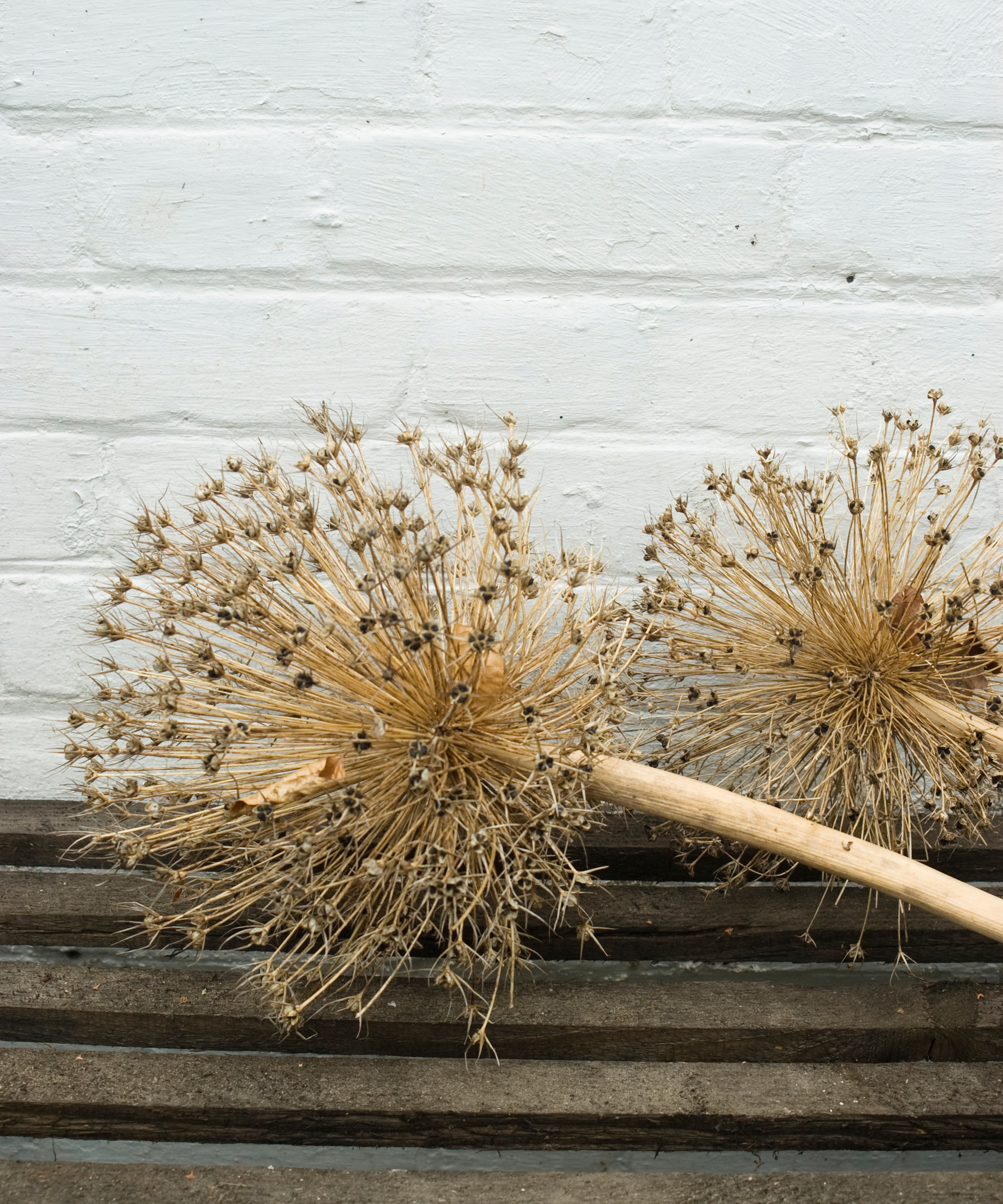
Members of the onion family, these flowering bulbs send up tall, sturdy stalks topped with globe-like flower heads made up of dozens (sometimes hundreds) of tiny star-shaped blooms. Beautiful in flower beds and striking as simple cut stems in a vase, they are easy to grow and can be dried afterwards too. The best allium varieties for drying are those with big beautiful flowerheads.
'Alliums are one of my favorite fall planted bulbs for spring blooms,' says Tabar. 'The variety of colors, and sizes make these among the most striking ornamental plants you can grow, offering architectural interest, pollinator appeal, and excellent potential for drying.
'Two standout varieties, Globemaster and Gladiator, are favorites for their dramatic presence and reliability in the garden. Both dry beautifully for long-lasting indoor arrangements.
'To dry Globemaster, cut the flowers once they’re fully opened and starting to mature, then hang them upside down in a dry, airy space. Their sculptural form holds up well, making them a favorite for modern dried arrangements.
'With Gladiator, cut when the blooms are fully formed but not yet faded. They retain their shape and texture well, and the seed heads can also be used in more natural, textural arrangements.'
9. Hydrangeas
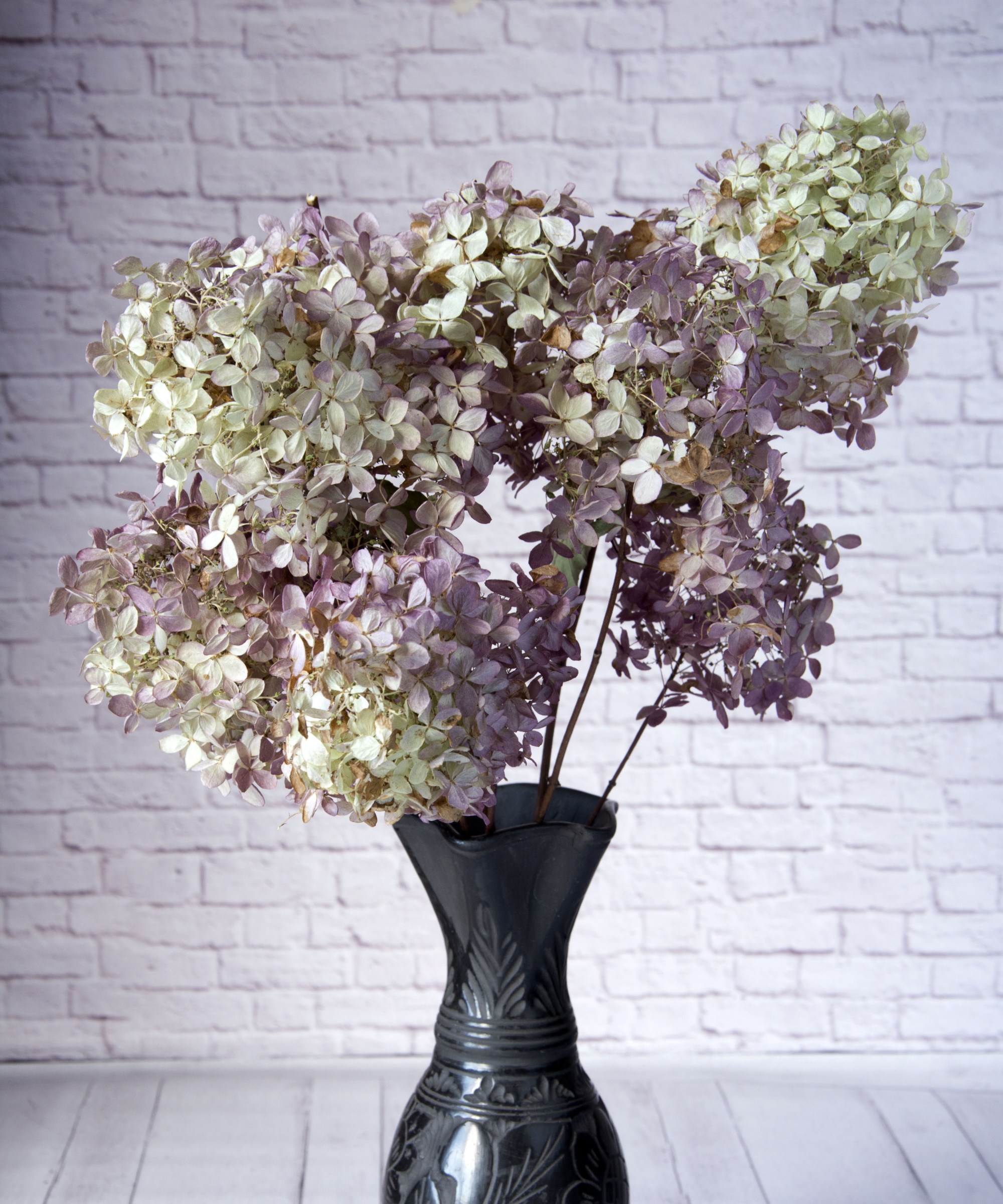
A familiar sight in dried flower arrangements in the fall and for the holidays, hydrangeas are one not to miss. Yet, it's not just mop-head hydrangeas that make beautiful dried displays, panicle varieties can too. How to grow hydrangeas will vary according to where you live, but this a plant to include in your preserving repertoire.
'Hydrangeas are beloved for their lush blooms and long-lasting beauty, and two of my favorite standout varieties are the Limelight and Ruby Slippers,' says Tabar. 'They’re especially prized for their garden performance and value in fresh and dried arrangements.
'Limelight is a panicle hydrangea, known for its massive, cone-shaped flower heads that emerge in a soft chartreuse green in midsummer, gradually aging to creamy white, pink, and finally a deep rose in the fall. Its strong, upright stems keep the blooms from drooping, making it a favorite for cut flower arrangements.
'When it comes to drying, blooms can be cut once they begin to blush with pink and hung upside down in a dry, well-ventilated space to preserve their color and shape.
'Ruby Slippers hydrangea (Hydrangea quercifolia 'Ruby Slippers') brings a more compact form and dramatic color. This oakleaf hydrangea opens with creamy white blooms in early summer that quickly deepen to pink and finally a rich, ruby red.
'In fall, the deeply lobed foliage transforms into a striking burgundy-bronze, providing multi-season interest. Its bold, conical blooms dry well. Harvest them when they’ve taken on their deeper red tones and feel slightly papery for best results.'
All of the plants and flowers selected here can be enjoyed in the garden throughout the summer, then plucked, dried and appreciated again in the home through fall, winter and beyond - especially when arranged in one of these best vases. So, have fun with planting them in the spring and prolonging their beauty, once they have flourished.
Jacky Parker is a freelance lifestyle journalist and writer, producing a wide range of features for magazines and websites. She has written for Homes & Gardens and its sister titles, Livingetc and Country Homes & Interiors for more than 15 years, both as a freelance contributor and staff member, regularly reporting on the latest interiors, gardens and lifestyle inspiration, speaking to experts in their respective fields and discovering the newest tips.
